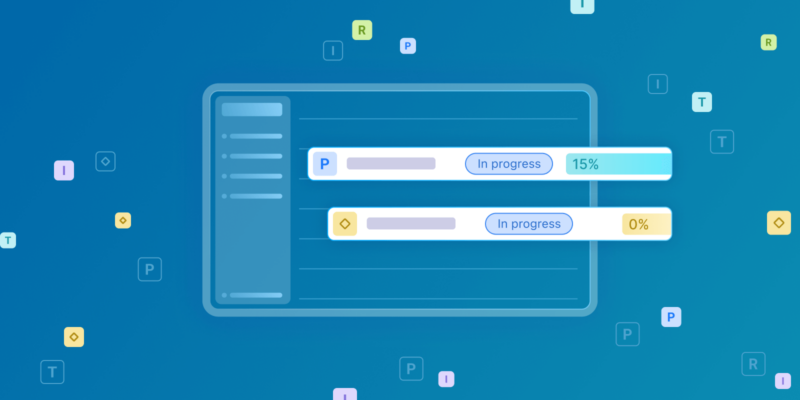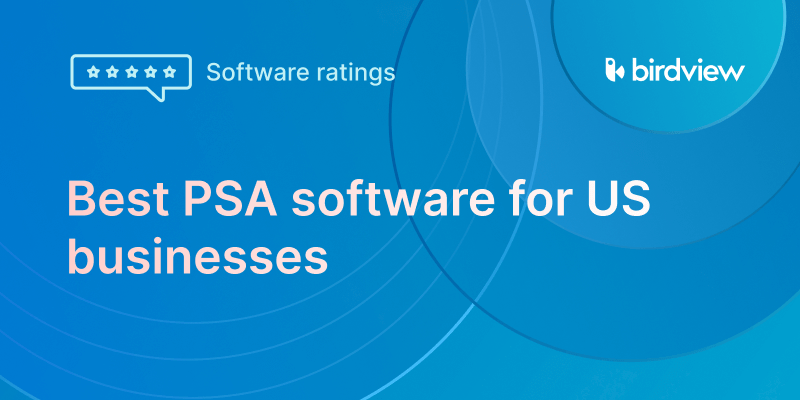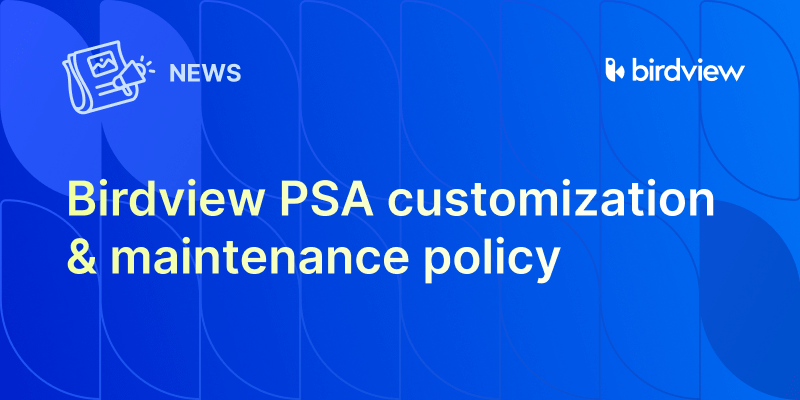You’ve built a fantastic product or service. Your sales team is closing deals. But what happens after the sale? Ensuring your customers achieve their desired outcomes and feel valued is the lifeblood of retention and growth. That’s where your Customer Success (CS) team shines.
However, as Jeff Kushmerek aptly pointed out in his recent LinkedIn post, if your CS team is still “running on spreadsheets and SalesForce tasks,” you’re likely facing a mountain of inefficiencies that are holding you back.
Spreadsheets were great for a lot of things – back in 1995. But for a modern, proactive, and scalable Customer Success operation, they’re often a bottleneck, not a solution. From managing complex onboarding projects to tracking client health and ensuring timely renewals, relying on disconnected spreadsheets is a recipe for missed opportunities and frustrated teams.
It‘s time to move beyond the limitations of manual tracking and embrace a system designed for the unique needs of Customer Success. This article will dive into why spreadsheets are failing your CS team and how true Professional Services Automation (PSA) software, like Birdview PSA, can transform your client management and drive sustainable growth.
Why spreadsheets are failing your customer success team
A common challenge for Customer Success teams is that they often inherit tasks from CRM systems like Salesforce. But CRMs aren’t designed for detailed project management, resource planning, or tracking the full customer lifecycle. To fill those gaps, teams often turn to spreadsheets–but instead of solving the problem, they usually create new ones.
Siloed and Scattered Information:
⚠️The Pain: Customer data is in the CRM, onboarding plans are in one spreadsheet, health scores in another, renewal dates in a third, and resource availability? That‘s probably a separate, manually updated sheet. This fragmentation means no single source of truth.
📉 The Impact: Your CSMs waste valuable time hunting for information, leading to inefficiencies and an incomplete view of the customer journey. It’s hard to be proactive when you can’t see the full picture.
Manual, Error-Prone Processes:
⚠️The Pain: Updating spreadsheets is a manual, tedious task. Data entry errors are common, formulas break, and version control is a nightmare.
📉 The Impact: Inaccurate data leads to flawed decision-making. Missed follow-ups, incorrect health assessments, and delayed renewal outreach can all stem from simple spreadsheet mistakes.
Lack of Real-Time Visibility & Collaboration:
⚠️The Pain: Spreadsheets are static. They don’t provide real-time updates on customer interactions, project progress, or team workload. Collaboration often happens via email, leading to more scattered communication.
📉 The Impact: CSMs can’t quickly see if a client is at risk, if an onboarding project is falling behind, or if a teammate needs help. This reactive approach makes it difficult to address issues before they escalate.
Inefficient Onboarding & Implementation Management:
⚠️The Pain: As Kushmerek points out, CSMs are often “running mini-projects” for onboarding. Managing these complex implementations with multiple tasks, dependencies, and stakeholders in a spreadsheet is incredibly challenging.
📉 The Impact: Onboarding delays, missed steps, and a clunky client experience. This sets a poor tone for the entire customer relationship and can directly impact early adoption and perceived value.
Difficulty Tracking Key CS Metrics:
⚠️The Pain: Calculating critical CS metrics like Net Revenue Retention (NRR), churn rate, customer health scores, and time-to-value manually from disparate spreadsheets is a significant undertaking.
📉 The Impact: You lack the data-driven insights needed to understand trends, measure the effectiveness of your CS strategies, and justify the team’s impact on the business.
Scalability Issues:
⚠️The Pain: As your customer base and CS team grow, managing everything in spreadsheets becomes exponentially more complex and unsustainable.
📉 The Impact: Your processes break down, your team gets overwhelmed, and the quality of customer engagement suffers. You can’t scale excellence with manual, disconnected tools.
If these challenges sound familiar, you’re not alone. Many growing Customer Success teams hit a wall with spreadsheets and generic task management.
📚 You may also like:
Onboarding vs. Implementation: Why Both Matter?
Client Onboarding Automation: Strategy and Benefits
The solution: true PSA software for proactive customer success
The answer isn’t just another tool; it’s the right kind of tool. Professional Services Automation (PSA) software is designed for project-based, client-facing work, making it an ideal fit for the multifaceted role of Customer Success.
Birdview PSA offers a comprehensive platform that moves your CS team beyond spreadsheets and empowers them to manage the entire customer lifecycle effectively. Here‘s how:
1. Centralized Customer & Project Management
Say goodbye to scattered data. Birdview PSA provides a single platform to manage all aspects of your customer engagements:
- Unified Customer View: Integrate with your CRM or manage client information directly within Birdview PSA. See project history, key contacts, and interaction logs in one place.
- Structured Project Management: Manage client onboarding and implementation projects with proper project planning tools. Create task lists, set dependencies, assign resources, and track progress using Gantt charts or Kanban boards. Birdview PSA makes managing these “mini-projects” seamless.💡 Example: For a new SaaS client, you can create an onboarding project template in Birdview PSA with predefined phases like “Kick-off Call,” “Data Migration,” “User Training,” and “Go-Live,” assigning tasks and deadlines to ensure a smooth rollout.
2. Efficient resource & workload management
Ensure your CSMs have balanced workloads and are assigned to tasks that match their skills:
- Resource Allocation Visibility: See your team’s workload and availability in real-time. Birdview PSA‘s Resource Loading Reports help you identify who can take on new clients or who might be overstretched.
- Skill-Based Assignment: Track CSM skills and assign specialized tasks (e.g., technical onboarding, strategic reviews) to the best-fit team members. Useful Tip: If a client requires specialized industry knowledge for their success planning, use Birdview PSA to assign a CSM with that specific expertise.
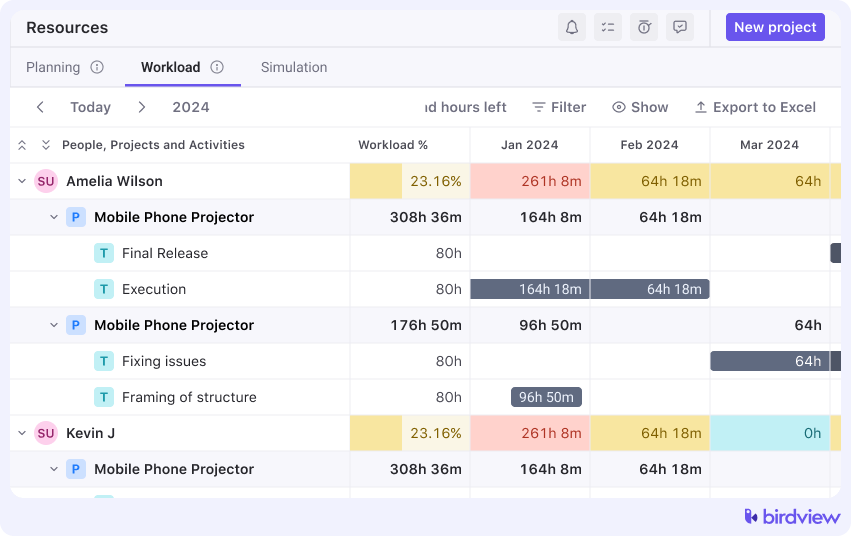
3. Automated Workflows & Task Management
Reduce manual effort and ensure consistency in your CS processes:
- Workflow Automation: Automate recurring tasks like follow-up reminders, health check scheduling, or renewal notifications.
- Standardized Playbooks: Implement standardized onboarding playbooks or success plans as project templates in Birdview PSA, ensuring every client receives a consistent, high-quality experience.💡 Example: Automatically trigger a sequence of tasks in Birdview PSA when a new client is marked as “Closed-Won” in your CRM, initiating the onboarding project.
4. Real-Time Collaboration & Communication
Keep your team and your clients aligned:
- Internal Collaboration: CSMs can collaborate on client accounts, share notes, and track progress within Birdview PSA, eliminating the need for endless email chains.
- Client Communication: Use Birdview PSA‘s Client Portal to share project updates, key documents, and progress reports directly with clients, enhancing transparency and managing expectations.
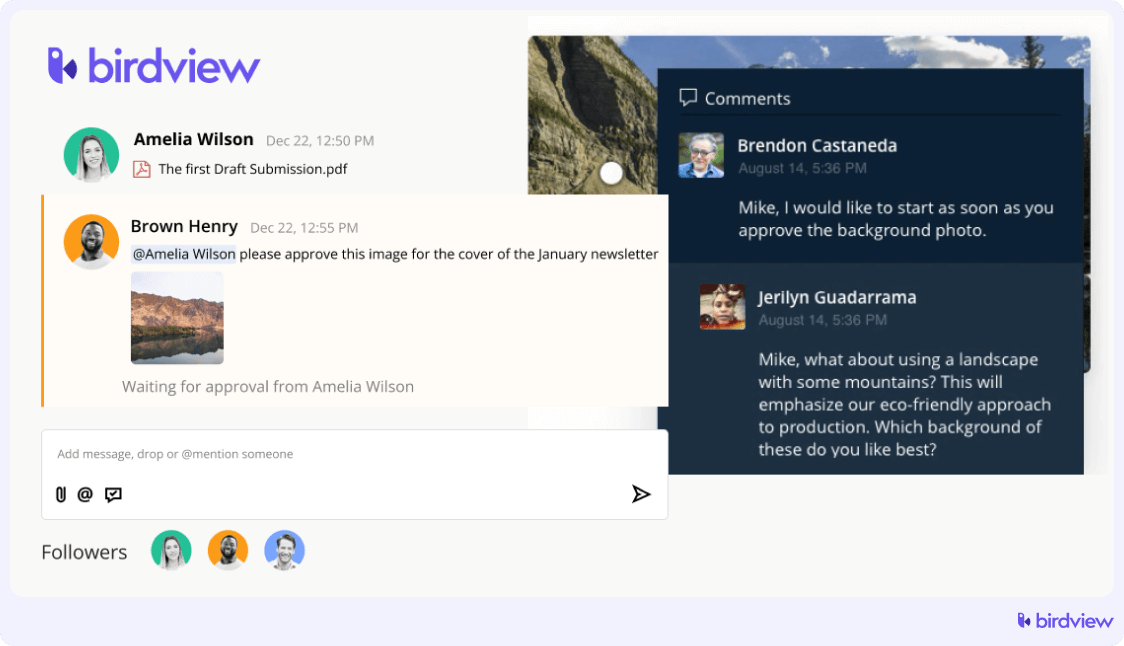
5. Powerful Reporting & Analytics for CS Metrics
Move beyond manual spreadsheet calculations. Birdview PSA provides the tools to track and analyze key Customer Success metrics:
- Track Time & Effort: Understand how much time your team is spending on different clients or activities, helping you assess the cost-to-serve.
- Project Profitability (for PS-related CS): If your CS team offers billable professional services (e.g., premium onboarding, custom training), Birdview PSA can track project costs and revenue to ensure profitability.
- Custom Dashboards: Create dashboards to visualize key CS metrics, providing leadership with real-time insights into team performance and customer health. Useful Tip: Build a dashboard in Birdview PSA showing onboarding project completion rates, time-to-value for new clients, and CSM workload distribution.
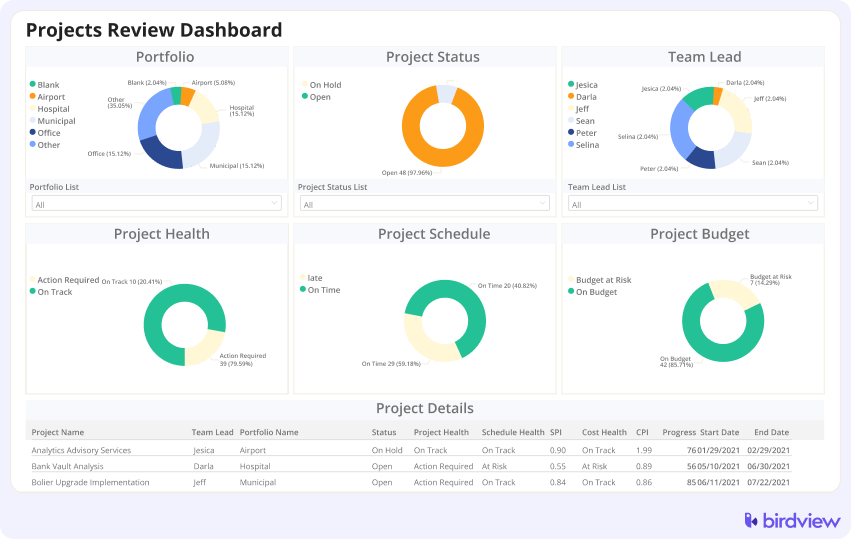
6. Scalability for Growing Teams
As your customer base grows, Birdview PSA scales with you. Add new CSMs, manage more complex client segments, and refine your processes without being limited by the constraints of spreadsheets.
Why replacing spreadsheets is key to scaling customer success
Using spreadsheets to run your Customer Success team holds you back. It’s not just a matter of efficiency. It makes it harder to manage customer relationships, drive adoption, and show value. In the end, it can hurt retention and slow down growth.
Birdview PSA offers a robust, integrated platform that addresses the core challenges faced by CS teams stuck in spreadsheet mode. It provides the structure for managing complex onboarding projects, the visibility for effective resource allocation, the automation for consistent engagement, and the analytics for data-driven decision-making.
It’s time to equip your Customer Success team with the tools they need to truly succeed – and that means moving beyond the limitations of spreadsheets.
Is your Customer Success team ready to ditch
the spreadsheet chaos?
Discover how Birdview PSA can streamline your client onboarding, balance workloads,
and empower your CSMs to drive real customer value.
or
📚 You may also like:
Client project management: 9 tips and tricks to follow
5 client management skills that every project manager needs
Client onboarding best practices, checklist, & strategies
Frequently asked questions
1. Why are spreadsheets bad for customer success?
Spreadsheets are bad for customer success because they lead to siloed data, manual and error-prone updates, lack real-time visibility, make collaboration difficult, and don’t scale as your customer base grows. This hinders proactive client management and efficient onboarding.
2. What are the limitations of using CRM tasks for customer success?
While CRM is great for sales, its task management is often too basic for the complex, project-based nature of Customer Success onboarding and ongoing engagement. It typically lacks detailed project planning, resource management, and specific lifecycle tracking needed by CS teams.
3. How can PSA software help customer success teams?
PSA (Professional Services Automation) software helps Customer Success teams by centralizing client data, managing onboarding projects, automating workflows, tracking CSM workload and resource allocation, facilitating collaboration, and providing robust reporting on CS metrics.
4. What tools should a customer success manager use?
A Customer Success Manager should use tools that provide a 360-degree view of the customer, manage onboarding projects, track customer health, automate communication, and facilitate internal collaboration. PSA software, CRM integrations, and communication platforms are key.
5. How to improve customer onboarding efficiency?
Improve customer onboarding efficiency by standardizing processes with project templates, automating repetitive tasks (like follow-ups and resource assignment), centralizing communication, and providing clients with a portal for real-time progress updates and feedback.
6. How to manage customer success projects effectively?
Manage customer success projects effectively by using structured project management methodologies, clearly defining tasks and deliverables, assigning resources appropriately, tracking progress in real-time, and maintaining clear communication with both the client and internal teams, ideally through a PSA platform.
7. What are the benefits of a centralized customer success platform?
A centralized customer success platform offers a single source of truth for all client information, project status, and team activities. This improves visibility, reduces errors, streamlines collaboration, enhances reporting, and allows for more consistent and proactive client engagement.
8. How to track customer health scores without spreadsheets?
Track customer health scores without spreadsheets by using dedicated Customer Success or PSA software that allows you to define health metrics, automatically pull in relevant data (like product usage, support tickets, survey responses), and display scores in real-time dashboards.
9. How to scale customer success operations?
Scale customer success operations by standardizing processes, automating repetitive tasks, leveraging technology like PSA software for better data management and visibility, segmenting customers for targeted engagement, and continuously training your team.
10. What is the difference between CRM and PSA for customer success?
CRM focuses on managing customer relationships and sales interactions (pre-sale & ongoing relationship). PSA software is more project-oriented, helping manage the delivery of services, onboarding projects, resource allocation for CS engagements, and tracking the financial aspects of service delivery by CS teams. While they can integrate, PSA handles the “doing” for the client.

